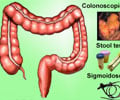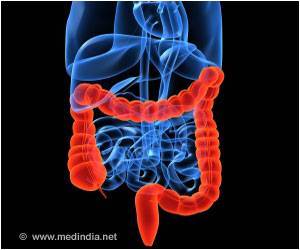Highlights
- Growing cancer cells are found to be stem cells
- A perfect storm of DNA mutation, damage to tissue and stem cell activation lead to cancer.
- Infant stem cell is less likely to form cancer
Stem cells are progenitor cells that grow and develop into many different types of cells during early stages of life. They are also found in certain tissues in the body where they serve as internal cells for repair. Every time a stem cell divides, it forms more stem cells or it divides into specialized cells.
Some scientists believe that the ability of stem cells to generate could be the triggering factor for the development of cancer.
The study’s senior author, Dr. Richard Gilbertson who was the director at St. Jude scientific and Comprehensive Cancer Center and currently the director of the Cancer Research UK Cancer Center at Cambridge University says “The chance accrual of random mistakes in cell DNA likely plays an important role in generating cancer; but whether this has to happen in specific cell types, such as stem cells, and precisely how other factors such as environmental carcinogens contribute to cancer is unclear.
Indeed, an argument has raged across the scientific community for some years now - some say cancer is 'bad luck' because mutations arise by chance in stem cells, while others argue environmental carcinogens are more important. This disagreement has arisen largely from the use of different mathematical models to look at existing human cancer and stem cell data, from which it is extremely difficult to tease out the impact of individual factors. Therefore, we tested these different opinions in actual experimental models that looked at the individual components that might drive cancer."
Factors that Signal Cancer Stem Cells
Cancer cells grow like normal cells, mimicking the growth and differentiation of stem cells.- Tumor cells like stem cells can grow and mature extensively, some of them mature into transit amplifying cells.
- The transit amplifying cells divide for a specific number of time before they differentiate into specialized cells.
- The cells that differentiate into specialized cells do not divide and do not further assist in the growth of the tumor.
A marker molecule called Prom 1 was used to identify the activity of cells in the various tissues of mice. In certain tissues, these marker cells were mature and did not divide but in certain other tissues they were active stem cells. Dr. Liqin Zhu who is the first author of the study and a research associated at St. Jude’s says “By following these Prom1+ cells in all the major organs in mice through their lifetime journey we were able to identify in which organs these cells were actively dividing stem cells."
Once the activity of these marker cells was identified in the whole body of mice, mutations were introduced into these cells. Dr. Zhu adds "This approach does away with the need for carcinogens, removing them from the cancer equation and allowing us to test if the generative capacity of stem cells influenced cancer risk.” The researchers spent 7 years studying the spread of the cells and the development of cancer.
‘Perfect Storm’
The study shows that stem cells are required for the generative capacity of tumor cells. However, the research shows that stem cells can be woken up to form cancer. For example, when the liver is damaged it can wake up the stem cells, increasing the risk for cancer.
The researchers conclude that a perfect storm needs to occur for cancer to form and develop, the perfect storm include:
- Mutations in the DNA
- Stem cell function
- Damage to the tissue
The scientists also showed that stem cells in young animals were less likely to develop into cancer cells when compared with adult stem cells. This could be due to the fact that stem cells in children have an innate resistant to the development of cancer.
Dr. Zhu further adds "If this biology were to hold true in humans, then it may explain why cancer rates are many-fold lower in children than adults, despite the fact that childhood cancers accrue significant numbers of mutations that alter proteins, and the growth rates of organs peak in childhood."
The findings of the study provide crucial evidence about the growth and spread of tumors that will pave the way for a better treatment module.
References:
- Stem Cell Basics - (http://stemcells.nih.gov/info/basics/pages/basics1.aspx)
- Cancer - A Disease of the Stem Cells - (http://www.eurostemcell.org/factsheet/cancer-disease-stem-cells)















